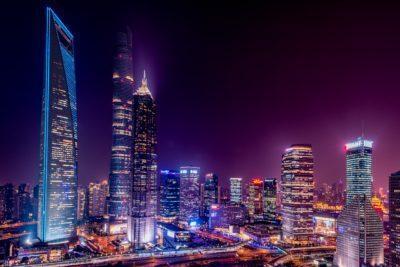By Matt Hamblen
It has taken years for some cities to create a vision for smart city technology, then to launch tech trials and early rollouts. Now, cities and tech companies are eager to make the leap to larger-scale projects
Cities want to implement public safety and congestion control technologies that expand farther than just an intersection or a few blocks to reach entire neighborhoods or even large portions of a city. The barriers to such growth are the same as always with ambitious public works projects: cost and bureaucracy.
The broadest-reaching technologies in many U.S. cities have been streetlight upgrades across miles of streets that bring LED lighting efficiencies and eye-catching cost-savings. Light poles often include control technology that can automatically lower lighting on the brightest nights or turn off lights when no people or vehicles are present. Sensors can also tell a central dispatcher when a light isn’t working properly so crews don’t have to drive endlessly through neighborhoods to find outages.
Vendors are also adding assorted gear on the top of these light poles with the ability to monitor air pollution or video cameras that can view crowds, traffic, parking or even help solve crimes.
One of the most ambitious smart city plans was balked in Kansas City, Missouri. There, a large bidding process was shelved in June, leaving it to a newly elected mayor and other officials to help decide what’s next.
“If you try and bite off too much, it’s very challenging, as we believe is the case of KC which put a lot into one smart city bonanza,” said Sean Harrington, Verizon Vice President of City Solutions. Verizon has been working with Kansas City for years on various smart city trials and rollouts. The carrier also has smart city projects in multiple cities in the works that will often be built with fast, low latency 5G wireless.
“It’s much more feasible to look at city departments with their respective challenges, including with procurement,” he said in an interview. “That’s not to say you can’t do more holistically, citywide.”
Harrington believes the most solid business case for city investments in smart tech will come with partnerships with private industry. Lighting controls and work with private utilities can result in payback in five to 10 years on millions of dollars invested, he said.
In Sacramento, California, Verizon is deploying neural network-based video analytics from video nodes at an intersection from the vantage of 30-foot light poles. The purpose so far has been to detect and classify objects, mostly cars and pedestrians and bikes for safety analysis.
With fast network connections, including 5G, the video analytics can connect to other infrastructure (such as streetlights) or even autonomous vehicles (AVs) to aid in crash avoidance. In theory, such a system could turn lights red or even control brakes on a fast-moving AV about to hit a pedestrian.
“It’s a nascent field, but we are at the forefront,” Harrington said.
Verizon and other vendors are working to overcome financial challenges that cities face. “The private sector is increasingly merging more with city operations,” he said. “It’s not a panacea, but it does create more and more opportunities.”
One way a public-private partnership can work is if cities agree to let vendors use massive amounts of collected data on vehicle movements in exchange for vendors installing sensors and analytics at their cost. The collected data can be used in other cities and other settings to help predict how traffic and pedestrians will interact, and those insights can guide how cities upgrade infrastructure.
New business models are emerging. Of the 50 largest U.S. cities, 45 have smart city strategic projects in place or planned, said Eric Woods, an analyst at Navigant Research who spoke on a recent webinar.
Bill Bratton, former police commissioner for New York City, said on the webinar that the advantages of 5G for cities “are really unlimited” with the ability to use video constantly streaming information to police and fire personnel at an emergency.
Broader use of video will help speed response to a terrorist attack or other crime in outdoor spaces, including large stadiums and parks, Bratton said. Combining public and private video feeds “will rapidly change the quality and capacity of safety in home, entertainment and work.” Bratton realizes that some privacy issues with video facial recognition technology need to be resolved, but there are still clear advantages with the technology.
“In times of cyber attacks and terror attacks and mass shootings, we can get our arms around these problems in a faster, more secure way,” Bratton said.
Harry LaRosiliere, the mayor of Plano, Texas, said public safety “always rises to the top” of his city’s priorities for new technology. Second to that concern is using technology to help reduce the number of cars that flood the city every day with only one occupant inside.
As early as 2021, LaRosiliere said the city is looking forward to having Uber Elevate fly business workers from the Dallas-Fort Worth Airport to downtown Plano in unmanned vehicles in 10 to 12 minutes. “Normally that could be a 45-minute ride in rush hour,” he said on the webinar.
For elected officials, the excitement of deploying new technology citywide is always limited by funding concerns.
“You always think of that bright and shiny thing and it costs a lot of money and then you get sticker shock,” Mayor LaRosiliere said. “We’re looking at simple things like text-to-911 or drones to expand the use of SWAT or even our fire recon before the first responder arrives and building inspections with the paper trail elimination.”

City dilemma: Making smart tech work citywide with limited funds
Posted by
Jimmy_Lecar
5 years Ago
23rd December 2019
Shares
What’s your reaction?
Shares
Jimmy_Lecar














